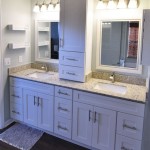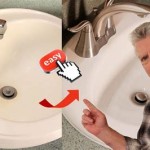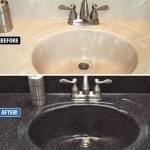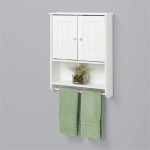Best Bathroom Floor Heating Systems: A Comprehensive Guide
Bathroom floor heating systems represent a significant upgrade in home comfort, especially during colder months. Eliminating the discomfort of stepping onto cold tile or stone, these systems provide a gentle, radiant warmth that elevates the bathroom experience. Choosing the best system requires careful consideration of various factors including heating technology, cost, installation complexity, and energy efficiency. This article provides a detailed overview of different bathroom floor heating systems, highlighting their pros and cons to assist in informed decision-making.
Types of Bathroom Floor Heating Systems
There are primarily two main types of bathroom floor heating systems: electric and hydronic. Each relies on distinct principles of operation and offers unique advantages and disadvantages.
Electric Floor Heating: Electric systems use electric cables or mats embedded in the flooring to generate heat. These systems are relatively straightforward to install, particularly in smaller spaces like bathrooms. They consist of a heating element, a thermostat for temperature control, and wiring to connect the system to the electrical grid.
Electric systems are available in two primary formats: loose cable and pre-fabricated mats. Loose cable systems involve weaving individual wires across the floor surface, allowing for customized heating patterns. This flexibility makes them suitable for bathrooms with irregular shapes or obstructions. However, installation requires more skill and time. Pre-fabricated mats, on the other hand, consist of heating cables pre-attached to a mesh backing. These mats are faster and easier to install, making them a popular choice for DIY enthusiasts. However, their fixed size may require cutting and splicing to fit complex bathroom layouts, which can affect performance and void warranties if not done correctly.
Hydronic Floor Heating: Hydronic systems, also known as radiant floor heating, circulate heated water through pipes embedded in the floor. The heat from the water radiates upwards, warming the floor surface evenly. Hydronic systems can be integrated with existing hot water heating systems or powered by a dedicated boiler or water heater.
While hydronic systems are generally more energy-efficient for larger areas, they can be more complex and expensive to install in smaller bathrooms. The installation process involves embedding pipes in a concrete slab or thin-set mortar bed, which requires professional expertise. However, hydronic systems offer consistent and comfortable warmth, and they can be a cost-effective option if the bathroom is part of a larger home heating system.
Key Considerations When Choosing a System
Selecting the appropriate bathroom floor heating system involves evaluating several crucial factors to ensure optimal performance, cost-effectiveness, and ease of installation.
Bathroom Size and Layout: The size and layout of the bathroom significantly influence the choice of heating system. For smaller bathrooms, electric systems, particularly pre-fabricated mats, are often the most practical and cost-effective option. Their relatively simple installation and lower upfront cost make them an attractive choice. Larger bathrooms, however, may benefit from the energy efficiency of hydronic systems, especially if they are connected to a whole-house heating system. The layout of the bathroom also plays a role. Irregular shapes and fixed obstacles like toilets and vanities may necessitate the flexibility of loose cable electric systems or careful planning with pre-fabricated mats.
Flooring Material: The type of flooring material used in the bathroom also affects the performance and suitability of different heating systems. Tile, stone, and concrete are excellent conductors of heat and are well-suited for both electric and hydronic systems. These materials retain heat effectively, providing a consistent and comfortable warmth. Laminate and engineered wood flooring can also be used with floor heating systems, but it's crucial to choose products that are specifically designed for radiant heat. Solid hardwood flooring is generally not recommended for use with floor heating systems due to its susceptibility to warping and cracking from changes in temperature and humidity.
Installation Complexity and Cost: The complexity of installation and associated costs are critical considerations. Electric systems, especially pre-fabricated mats, are relatively easy to install for homeowners with basic DIY skills. However, more complex electric systems, like loose cable, and all hydronic systems typically require professional installation. Professional installation adds to the overall cost but ensures proper functionality and adherence to building codes. The cost of the system itself varies depending on the type, size, and features. Electric systems generally have a lower upfront cost than hydronic systems, but hydronic systems can be more energy-efficient in the long run.
Energy Efficiency and Operating Costs: Energy efficiency is an important factor for homeowners looking to minimize their environmental impact and reduce energy bills. Hydronic systems, when connected to an efficient hot water source, tend to be more energy-efficient for larger areas. They use less electricity to generate a comparable amount of heat. Electric systems, while less energy-efficient overall, can be highly effective for smaller bathrooms and offer precise temperature control, minimizing energy waste. The operating costs of both systems depend on factors such as electricity or gas prices, insulation levels, and thermostat settings.
Installation Process and Best Practices
Proper installation is crucial for ensuring the longevity, performance, and safety of bathroom floor heating systems. Regardless of the type of system chosen, it's essential to follow manufacturer's instructions and local building codes.
Subfloor Preparation: The subfloor must be clean, level, and structurally sound before installing any floor heating system. Inspect the subfloor for any damage or irregularities and make necessary repairs. For concrete subfloors, ensure they are properly cured and free of cracks or debris. For wood subfloors, reinforce any weak areas and ensure they are adequately supported. Applying a self-leveling compound can create a smooth and even surface for the heating system.
Insulation: Adding a layer of insulation beneath the heating system can significantly improve its efficiency. Insulation reduces heat loss to the subfloor, directing more heat upwards into the bathroom. Foam boards or specialized insulation mats designed for floor heating systems are commonly used. The type and thickness of insulation depend on the climate, subfloor material, and desired level of energy efficiency.
Heating Element Installation: For electric systems, carefully follow the manufacturer's instructions for laying out the heating cables or mats. Ensure the cables are evenly spaced and securely attached to the subfloor. Avoid overlapping or damaging the cables. Use a multimeter to test the resistance of the cables before and after installation to ensure they are functioning correctly. For hydronic systems, install the pipes according to the design plan, ensuring proper spacing and secure connections. Pressure test the system before covering it with flooring material to check for leaks.
Thermostat Installation: Install the thermostat in a convenient and accessible location, away from direct sunlight and heat sources. Connect the thermostat wiring to the heating system according to the manufacturer's instructions. Ensure the thermostat is compatible with the type of heating system being used. Some thermostats offer advanced features such as programmable schedules, remote control, and energy monitoring.
Flooring Installation: Once the heating system is installed and tested, carefully install the flooring material according to the manufacturer's instructions. Use a thin-set mortar specifically designed for use with floor heating systems. Allow the mortar to cure completely before using the heating system. Avoid placing heavy objects or furniture directly on the heated floor until it has fully cured.
Maintenance and Troubleshooting
Bathroom floor heating systems require minimal maintenance, but regular inspections and prompt troubleshooting can prevent more significant problems.
Regular Inspections: Periodically inspect the thermostat, wiring connections, and flooring for any signs of damage or wear. Check for loose connections, cracked tiles, or uneven heating patterns. If any issues are detected, address them promptly to prevent further damage.
Troubleshooting Common Problems: Common problems with bathroom floor heating systems include uneven heating, thermostat malfunctions, and system failures. Uneven heating can be caused by improper cable spacing, insufficient insulation, or air pockets in hydronic systems. Thermostat malfunctions can result from faulty wiring, incorrect settings, or a defective unit. System failures can be caused by damaged heating elements, leaks in hydronic systems, or electrical faults.
Professional Assistance: For complex problems or repairs, it's best to consult a qualified electrician or HVAC technician. Attempting to repair the system yourself without the proper knowledge and experience can be dangerous and may void the warranty. A professional can accurately diagnose the problem and perform the necessary repairs safely and effectively.
In conclusion, selecting the best bathroom floor heating system involves a careful evaluation of factors such as bathroom size, flooring material, installation complexity, energy efficiency, and budget. Electric systems offer ease of installation and affordability for smaller bathrooms, while hydronic systems provide energy efficiency and consistent warmth for larger spaces. Proper installation, regular maintenance, and prompt troubleshooting are essential for ensuring the longevity, performance, and safety of the chosen system.

Bathroom Floor And Thermostats Warmup Usa

Bathroom Under Floor Heating System For Indoor At Best In Ghaziabad

Floor Heating Design Inspiration Www Westsidetile Com

Underfloor Heating For Tiles Under Tile Warmup

How To Choose The Best Tile For Heated Floors Oasis
.jpg?strip=all)
The Best Types Of Flooring For Radiant Heating

Warmup Underfloor Heating System At 350 Sq Ft Ram Bagh Srinagar Id 25953246030

The Best Types Of Flooring For Radiant Heating

Get The Best Quality Floor Heating System Latest News Dtw Ceramics Ltd

How To Install Heated Floors For Tile
See Also







